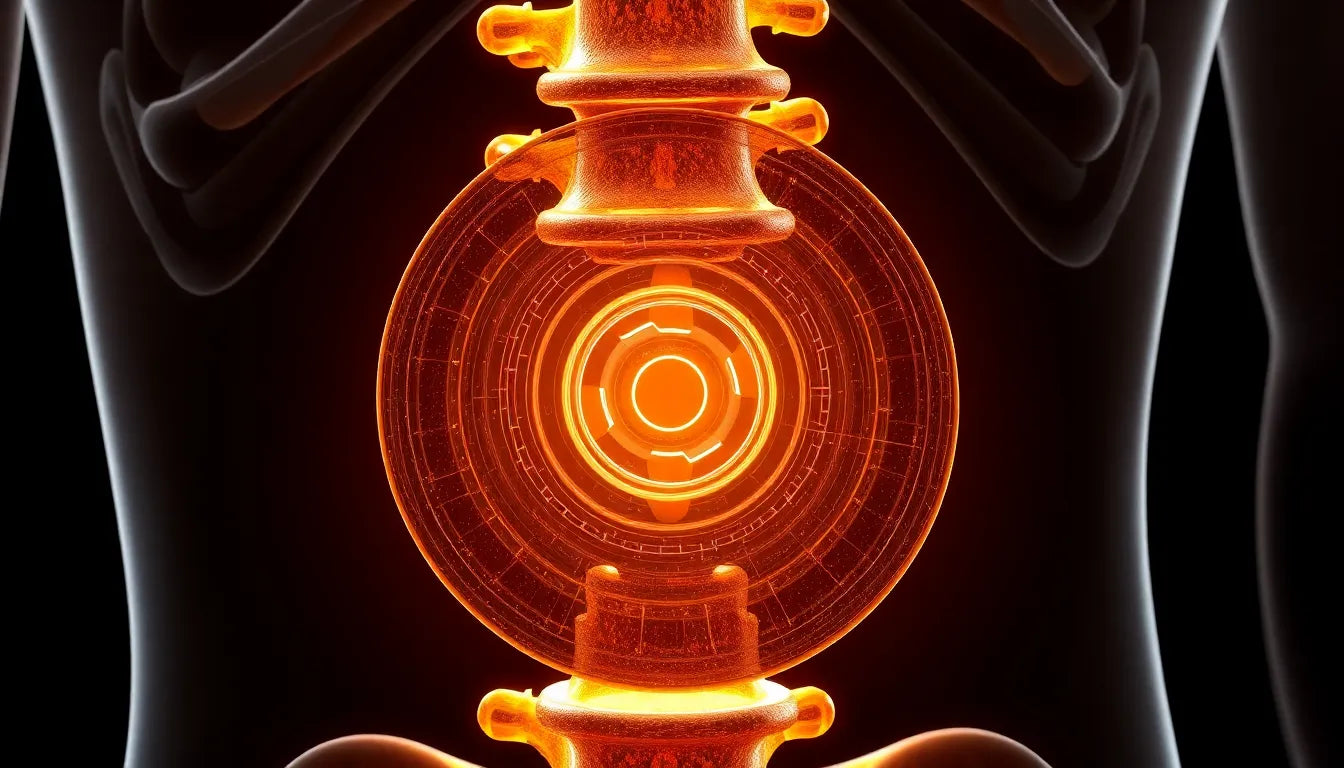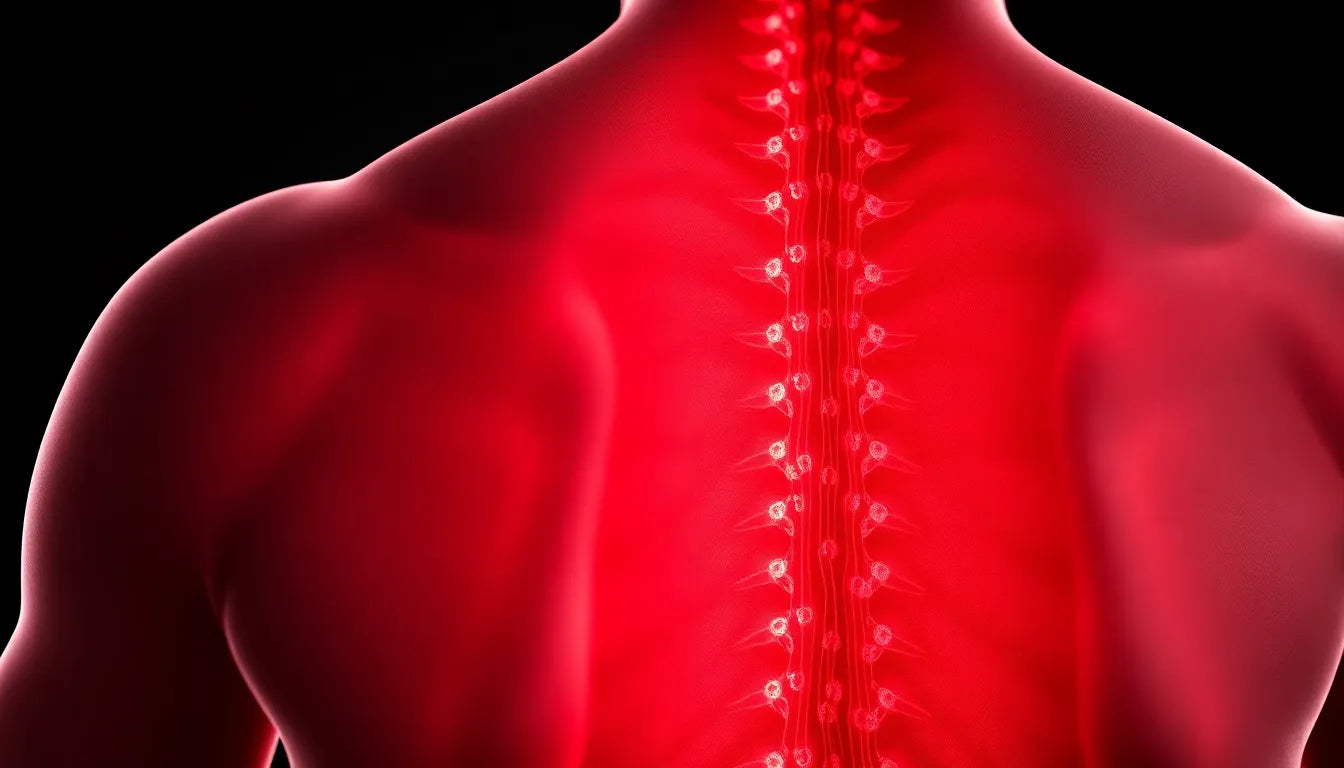Back pain is a common ailment that affects millions of individuals worldwide, often disrupting daily activities and diminishing quality of life. Among the various causes of back pain, the herniated disc stands out as a significant concern. But just how common is a herniated disc, and what implications does it hold for those affected? Understanding the prevalence and impact of herniated discs is crucial, not only for individuals experiencing symptoms but also for healthcare providers aiming to deliver effective treatment.
understanding herniated discs
A herniated disc, sometimes referred to as a slipped or ruptured disc, occurs when the soft inner gel of a spinal disc pushes through a tear in the tougher exterior. This condition can lead to irritation of nearby nerves, resulting in pain, numbness, or weakness in an arm or leg. The spine's discs play a vital role in providing cushioning and support, and when one becomes herniated, it can significantly impact spinal health and overall mobility.
It's important to note that not all herniated discs cause symptoms. In fact, many cases are asymptomatic, meaning individuals may have a herniated disc without even realizing it. This distinction between symptomatic and asymptomatic cases is essential for understanding the true prevalence of this condition and its potential effects on an individual's health.
As we delve deeper into the topic, it becomes evident that the prevalence of herniated discs is a subject of much interest and research. By exploring the statistics and demographic factors associated with this condition, we can better comprehend its commonality and the factors that contribute to its occurrence. This understanding is vital for empowering individuals with knowledge and guiding healthcare providers in their efforts to manage and treat herniated discs effectively.
prevalence and epidemiology of herniated discs
Understanding how common a herniated disc is requires a look into its prevalence and epidemiology. Symptomatic lumbar disc herniation affects approximately 1% to 3% of adults, with a notable concentration among individuals aged 30 to 50 years. This demographic is particularly susceptible due to factors like physical activity levels and occupational demands that place stress on the spine. Additionally, men are affected almost twice as often as women, suggesting that gender may play a role in the risk factors associated with herniated discs.
The incidence of herniated discs is estimated at 5 to 20 cases per 1,000 adults annually. This statistic highlights the frequency with which this condition is diagnosed and underscores the importance of awareness and early intervention. Most herniations occur at the L4-L5 and L5-S1 levels of the lumbar spine, areas that bear significant mechanical stress and are thus more prone to injury. In contrast, lumbar disc herniation is about 15 times more common than cervical disc herniation, with the overwhelming majority (95%) of lumbar cases affecting the aforementioned discs.
asymptomatic versus symptomatic herniated discs
One of the key aspects of understanding herniated discs is distinguishing between symptomatic and asymptomatic cases. Advanced imaging techniques, such as MRI, have revealed that disc protrusions and bulges can occur even in individuals who do not experience symptoms. This finding is particularly prevalent in older populations, where degenerative changes are more common. Studies indicate that about 20% of asymptomatic people under 50 may show disc protrusion, compared to nearly 40% of those experiencing symptoms.
Disc extrusions, which are a more severe form of herniation, are rare in asymptomatic individuals, occurring in less than 2% of cases. This data underscores the complexity of diagnosing and treating herniated discs, as the presence of a herniation on imaging does not always correlate with pain or discomfort. Understanding these nuances is crucial for healthcare providers in order to avoid unnecessary treatments and to focus on cases where intervention is truly needed.
visualizing herniated disc data
To better grasp the commonality and distribution of herniated discs, visual aids such as infographics or tables can be incredibly useful. These tools can summarize key statistics on prevalence, age distribution, and the specific spinal locations most often affected. By providing a clear and concise overview, these visuals help both patients and healthcare providers quickly understand the scope of the issue and the demographics most at risk.
In summary, while herniated discs are a frequent finding on spinal imaging, the percentage of cases that actually cause symptoms is significantly lower. Recognizing the difference between symptomatic and asymptomatic herniations is essential for accurate diagnosis and effective treatment. By focusing on the prevalence, epidemiology, and the critical distinctions in imaging findings, we can better address the challenges posed by this common spinal condition.
age and risk factors for herniated discs
The prevalence of herniated discs is notably higher among individuals aged 30 to 50 years, a demographic particularly susceptible due to lifestyle and occupational factors. This age group often engages in activities that place additional stress on the spine, such as heavy lifting, prolonged sitting, or repetitive motions, which can contribute to disc herniation. Furthermore, men are affected almost twice as often as women, which may be linked to differences in physical activity levels or occupational hazards.
diagnosis and misconceptions
A common misconception is that all disc bulges or extrusions seen on MRI scans are symptomatic. However, many people with herniated discs experience no symptoms at all. It's crucial to differentiate between imaging findings and actual symptoms to avoid unnecessary anxiety and treatment. Healthcare providers often use a combination of imaging tests, such as MRIs, and clinical evaluations to accurately diagnose symptomatic herniated discs.
practical implications and management strategies
For those diagnosed with a herniated disc, the outlook is often positive. Over 85% to 90% of individuals experience significant improvement within 6 to 12 weeks without the need for surgical intervention. Conservative treatments, including physical therapy, ergonomic adjustments, and pain management strategies, play a vital role in recovery. Ergonomic aids, such as supportive chairs and proper lifting techniques, can help manage symptoms and prevent further injury.
In cases where conservative treatments are insufficient, surgical options may be considered. However, surgery is typically reserved for severe cases where there is significant nerve compression or when conservative measures fail to alleviate symptoms.
Frequently Asked Questions
What is a herniated disc, and how does it occur?
A herniated disc occurs when the soft inner gel of a spinal disc pushes through a tear in the tougher exterior. This can result from wear and tear, injury, or heavy lifting, leading to irritation of nearby nerves.
How is a herniated disc diagnosed?
Diagnosis typically involves a combination of clinical evaluation and imaging tests like MRI, which help determine the presence and extent of the herniation.
What are the common symptoms of a herniated disc?
Common symptoms include pain, numbness, and weakness, usually affecting the back, legs, or arms, depending on the location of the herniated disc.
Can a herniated disc heal on its own?
Yes, many herniated discs can heal over time with conservative treatments. The body can reabsorb the herniated material, reducing pressure on the nerves and alleviating symptoms.
What are the treatment options for a herniated disc?
Treatment options include physical therapy, pain management, and ergonomic adjustments. Surgery may be considered for severe cases that do not respond to conservative treatments.
Understanding the prevalence and implications of herniated discs is essential for effective management and treatment. By distinguishing between symptomatic and asymptomatic cases and focusing on conservative treatment strategies, individuals can often achieve significant recovery and maintain a high quality of life.


















